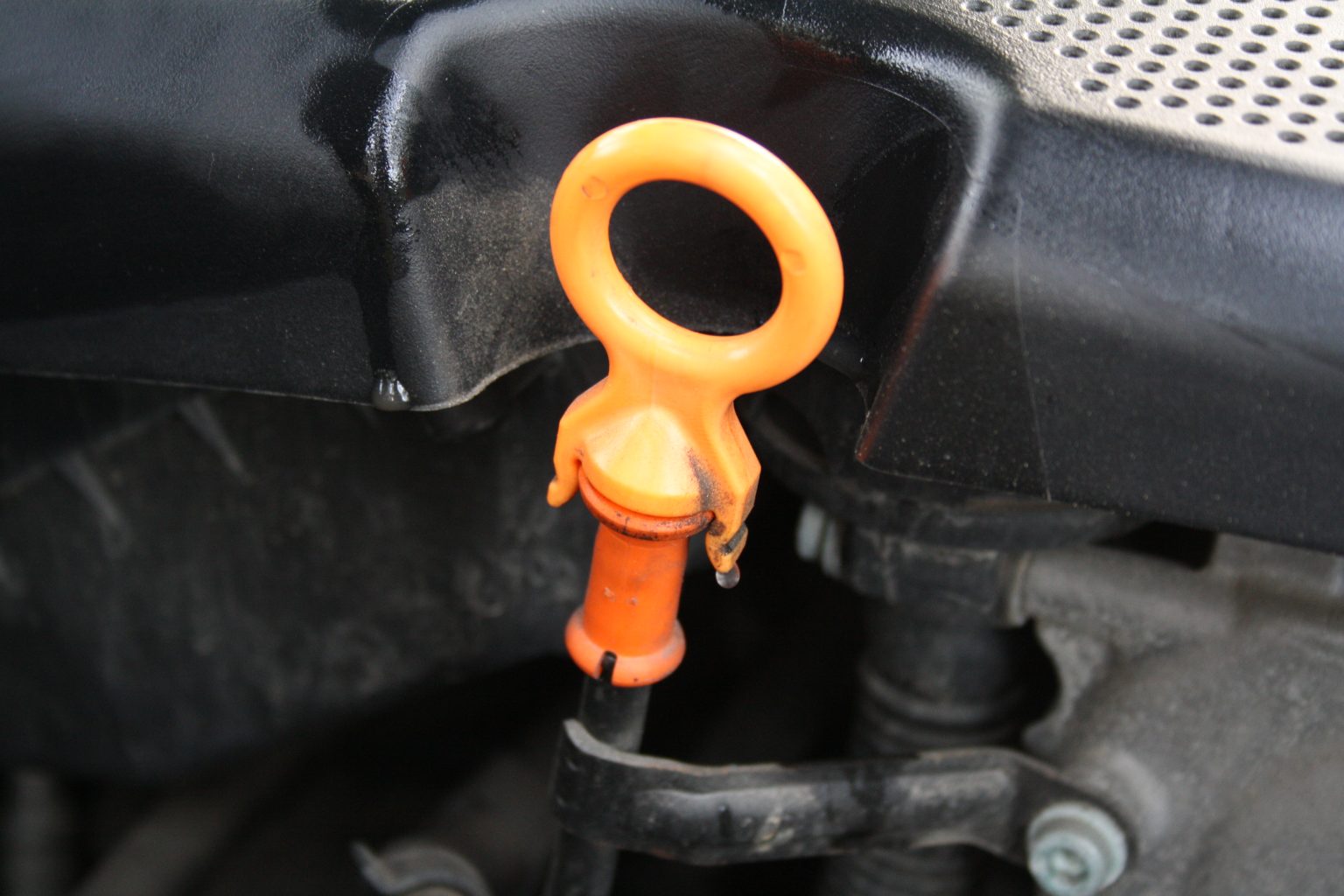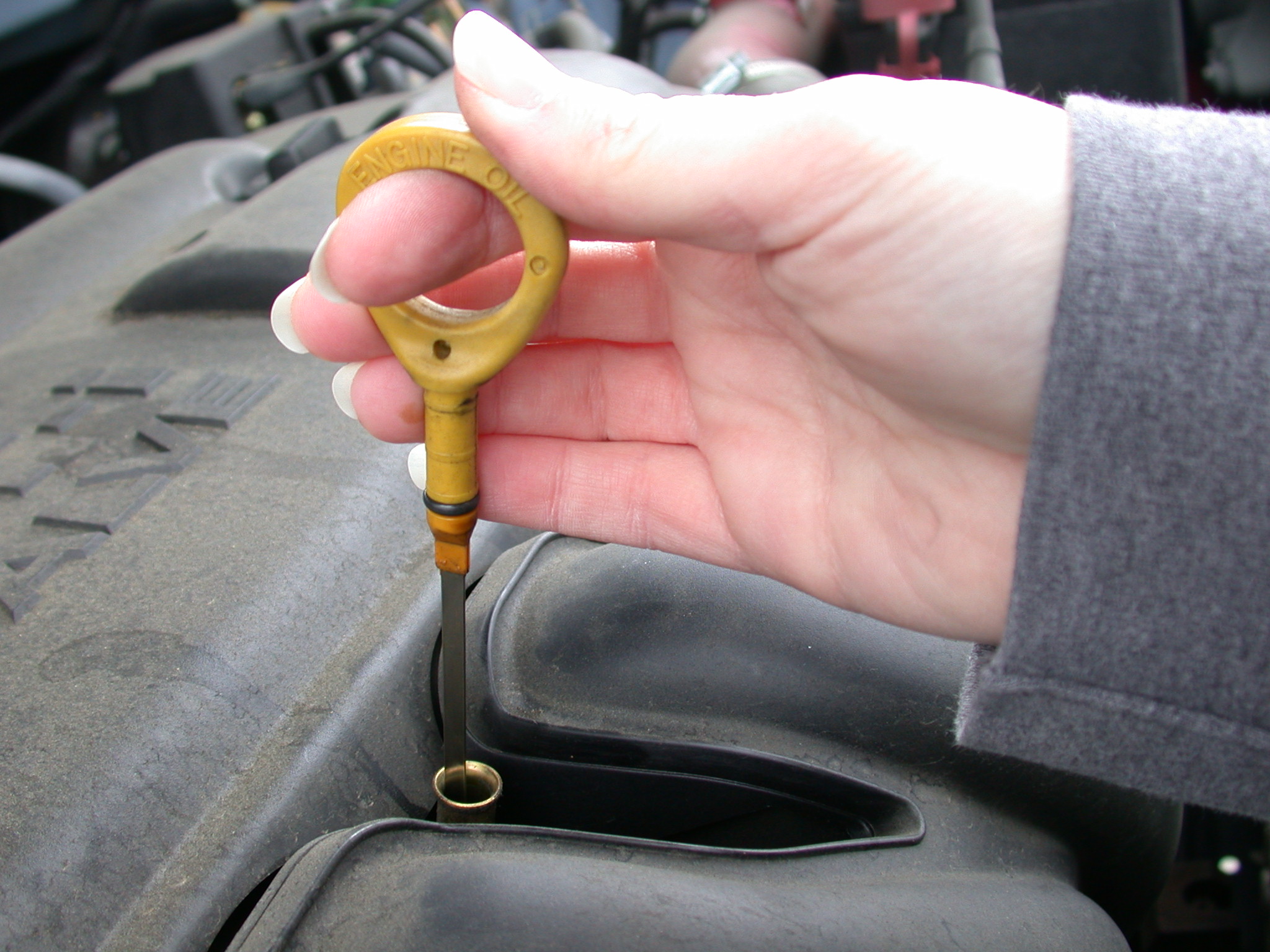Contents
– Purpose of the dipstick
– Oil dipstick: instructions for use
– Engine oil: dipstick evolutions
The dipstick is essential to check the oil level of your engine. How to do this check? Let’s take a look at it together.
Purpose of the dipstick
A vehicle’s engine runs on oil vital to its operation: it lubricates the mechanical parts.
In the lower crankcase of the engine is the oil reserve. To check the level of this reserve, a tube communicating with the top of the engine guides the oil dipstick, a metal rod dipped in its lower part in oil.
This lower part is marked with 2 marks:
– a minimum oil level mark;
– a maximum oil level mark.
Oil dipstick: instructions for use

The handling of the oil dipstick is relatively simple:
– First, stop the engine and wait a few minutes so that the oil can settle to the bottom of the crankcase.
– After opening the engine cover, locate the dipstick. It usually has a brightly coloured plastic handle at the top, either yellow or red.
– Take a rag and remove the dipstick, first wiping off the oil-stained part.
Finally, put the dipstick back in for another check:
– Below the mini level, you add an average of 3/4 of engine oil to reach the max level (too low an oil level can lead to loss of oil pressure and engine damage).
– Between mini and maxi, add oil sparingly so as not to exceed the max level.
– Above the maximum level, it is recommended to remove the excess oil, either by partial draining or by suction (too much oil can cause the engine to run out of control by sucking it back into the intake, especially for diesel engines).
Please note: it is essential to identify the causes of the oil overflow: it may be an accidental addition, but also the presence of coolant in the oil (heavier, it settles at the bottom of the crankcase under the oil) or diesel (regeneration of the particle filter). In these two cases, consult a repair shop as a matter of urgency.
Engine oil: changes in the dipstick
On modern vehicles, there are now electric oil dipsticks, which indicate the level on the instrument cluster:
– The dipstick with integrated electronics: this is your traditional dipstick that integrates an electronic sensor. It, therefore, combines the two control functions, manual and electric (a system that has been abandoned on the new generations of vehicles).
– The level sensor: located in the crankcase and independent of the dipstick (the most common system).
All these alerts, issued before the engine starts, can be cumulative:
– Warning light: it is generally yellow, with a pictogram reminding waves under an oil can or an oil dipstick.
– Level in the form of bar graphs.
– Warning message (“insufficient oil level”, “maintenance alert”, etc.)
Please note: you must check the oil level regularly and before a long-distance trip. The oil dipstick must be in perfect condition (rod, handle, and seal, if any). You must change the oil according to the manufacturer’s instructions and even more frequently if the periodicity exceeds 20,000 km.
Read more here:
- Cars and Vehicles | Why Install an Oil Recuperator;
- How to Choose Your Engine Oil;
- Car Servicing & Repairs;
- How to Change an Oil Filter;
Suppose you are looking for professional and experienced mechanics in Hoppers Crossing. In that case, Complete Mechanical Centre has got a team of fully licensed and qualified mechanics to take care of all your automotive needs, no matter the make and model of the vehicle!

